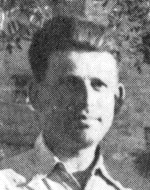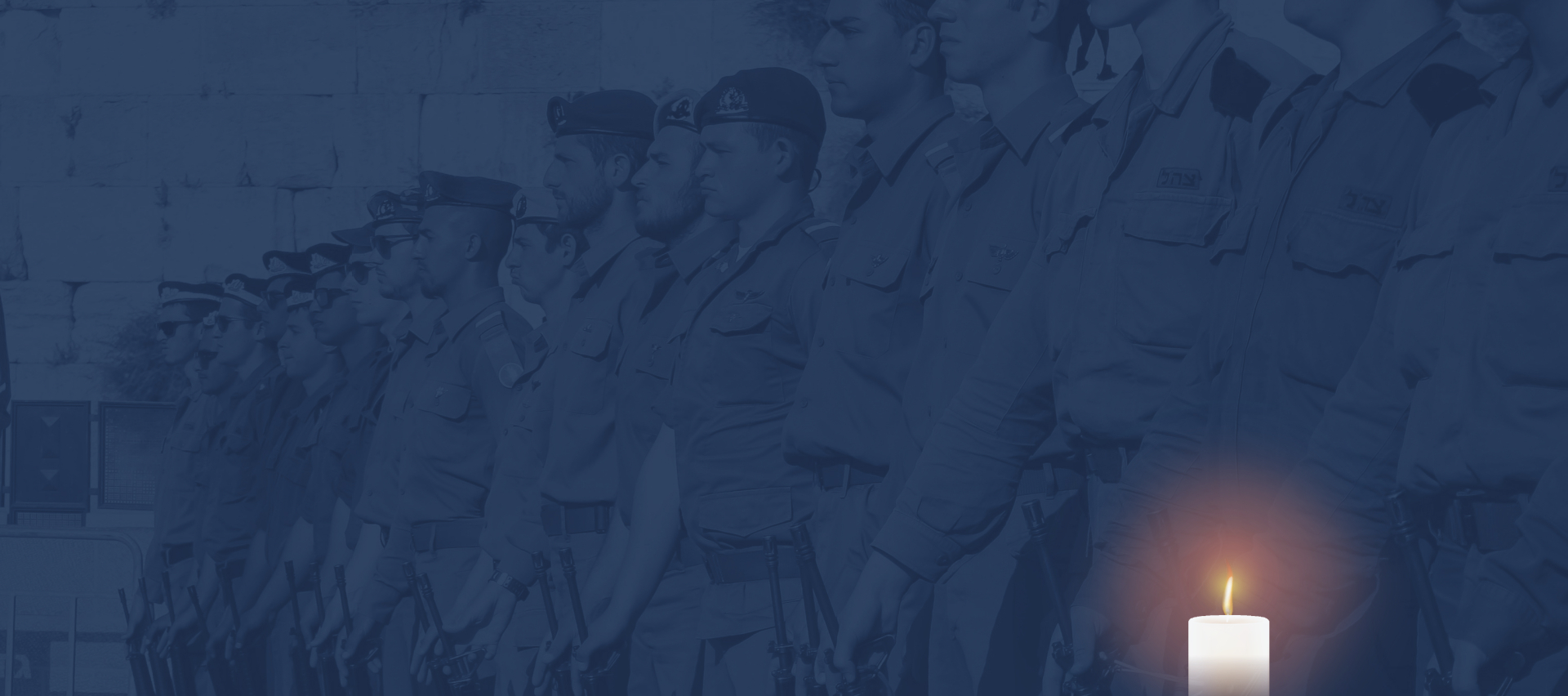,אֵ-ל מָלֵא רַחֲמִים, שׁוכֵן בַּמְּרומִים, הַמְצֵא מְנוּחָה נְכונָה
,עַל כַּנְפֵי הַשְּׁכִינָה בְּמַעֲלות קְדושִׁים, טְהורִים וְגִבּורִים
כְּזֹהַר הָרָקִיעַ מַזְהִירִים, לְנִשְׁמות חַיָּלֵי צְבָא הֲגָנָה לְיִשְׂרָאֵל


,אֵ-ל מָלֵא רַחֲמִים, שׁוכֵן בַּמְּרומִים, הַמְצֵא מְנוּחָה נְכונָה
,עַל כַּנְפֵי הַשְּׁכִינָה בְּמַעֲלות קְדושִׁים, טְהורִים וְגִבּורִים
כְּזֹהַר הָרָקִיעַ מַזְהִירִים, לְנִשְׁמות חַיָּלֵי צְבָא הֲגָנָה לְיִשְׂרָאֵל


Moshe, son of Lea and Mordechai (Shake), was born in Warsaw, the capital of Poland. His father was in charge of the city’s largest mikvah. Moshe grew up and was educated in Warsaw. From his youth Moshe worked as a clerk in the Jewish community. He married a wife and had two children. Warsaw, the capital of Polish Jewry, was also an important center of world Jewry in general. On the eve of World War II, there were some 375,000 Jews who, despite the economic distress, enjoyed cultural, educational, religious and political momentum, maintained welfare institutions, and published newspapers and books. The Jews engaged in crafts and industry, trade and finance, and the liberal professions, but the anti-Semitic policies led to a severe and rapid impoverishment. On September 1, 1939, World War II broke out with the German invasion of Poland and its conquest in the lightning war (“Blitzkrieg”). Immediately thereafter, anti-Jewish decrees and regulations were issued that resulted in the social isolation of the Jews, their economic deprivation, and the undermining of all their systems of life. On September 28, 1939, after three weeks of bombing and shelling, Warsaw surrendered to the Germans. 90,000 refugees were brought to the city and conditions of life worsened: overcrowding increased, food rations were cut and the population suffered from starvation and starvation. A ghetto was established in the city, the boundaries of which were not fixed, which caused confusion. In October 1939, a Judenrat was appointed, which was asked to supply the Germans with forced laborers. In November 1940 the Warsaw ghetto was closed and surrounded by a wall. The Jews lost their property, and the stream of refugees crammed into it increased the death toll by increasing numbers. In the summer of 1941, 11,300 Jews were sent to labor camps, many of whom perished. The deportation of the Jews to the death camps – especially Treblinka – began in July 1942 and was carried out in several waves. In the first months of 1943, the Jews managed to break through the revolt and detain the Germans, but by the end of that year most of Warsaw’s Jews had been exterminated. Moshe and his family stayed in the Warsaw ghetto and succeeded in hiding in a bunker they built, where more than thirty people were brought in. In December 1942, the hiding place was discovered, apparently by an informer, and the entire family was transferred to the Auschwitz death camp. All the family members perished, only Moshe survived the war. In 1946 Moshe immigrated to Israel, began working at the Hadassah Hospital on Mount Scopus and lived there. Even before the outbreak of the War of Independence, Moshe enlisted in the Haganah and served in the Etzioni Brigade, the “Jerusalem” Brigade, the 6th Brigade. The brigade, most of whose fighters came from Jerusalem and the surrounding settlements, organized in the winter of 1948. Together with the Palmach fighters, The Jewish settlements in Jerusalem and the Jewish settlements in the area, and the paths to them, which had many successes: The road from the Jewish neighborhoods of Jerusalem to the important Jewish institutions on Mount Scopus – the Hebrew University and the Hadassah Hospital – passed through the Lev of the Arab neighborhood of Sheikh Jarrah. The fighters of Etzioni protected the mountain, fortified it, and prepared for it, the very day after the Partition Plan In November 1947), the Arabs began to harass Jewish transportation on the way to the mountain, and several Jews were killed in the first weeks of the war, despite the British authorities’ commitment to protect Jewish transportation to Mount Scopus. Therefore, the movement was conducted in convoys, which were secured by the Haganah. Toward mid-April 1948, the tension in Jerusalem increased, so preparations were made for another convoy to Mount Scopus, with the explicit promise of the British that the road to the mountain was open and safe. The caravan, which left on the morning of Wednesday, April 13, 1948, consisted of nine vehicles, including about 100. The Hehalutz armored vehicle arrived at the Sheikh Jarrah neighborhood and boarded a mine that was placed on the road, a few dozen meters from the eyes of British soldiers In a position in the Lev of the neighborhood, because of the explosion of the mine, and dozens of armed Arabs ambushedThey began to attack its passengers in Gaza. Five vehicles from the convoy managed to escape from the battle zone and retreated back to the Jewish neighborhoods, but two buses, an ambulance and an escort vehicle were ambushed. The battle lasted seven full hours, when the Arabs tried to storm the trapped vehicles and a small handful of Haganah members tried to stop them. Fire from the Israeli positions in the city and Mount Scopus did not succeed in assisting the convoy. British military forces in the area watched the observer without interfering with their references. An attempt by the Haganah headquarters in Jerusalem to rescue the convoy failed, and one of the armored personnel carriers, who was sent for help, was captured and his men joined the fighting. In the afternoon the Arabs managed to light the two trapped buses at the end of the convoy. The buses and all their passengers were on fire and burned to the ground. One of them, who was supposed to arrive at Hadassah Hospital, was Moshe. It was not until evening, after many hours of Arab siege on the convoy, that the British agreed to intervene, stop the battle and rescue the trapped. More than seventy casualties were among the convoy’s passengers. Moshe was about thirty years old. He was laid to rest in a mass grave in the cemetery in Sanhedria, Jerusalem. This hero is a “last scion”. The survivors of the Holocaust are survivors of the Holocaust who survived the last remnant of their nuclear family (parents, brothers, sisters, sons and daughters) who experienced the Holocaust in the ghettos and / or concentration camps and / or in hiding and hiding in territories occupied by the Nazis and / Or in combat alongside members of the underground movements or partisans in the Nazi-occupied territories who immigrated to Israel during or after World War II, wore uniforms and fell in the Israeli army.

